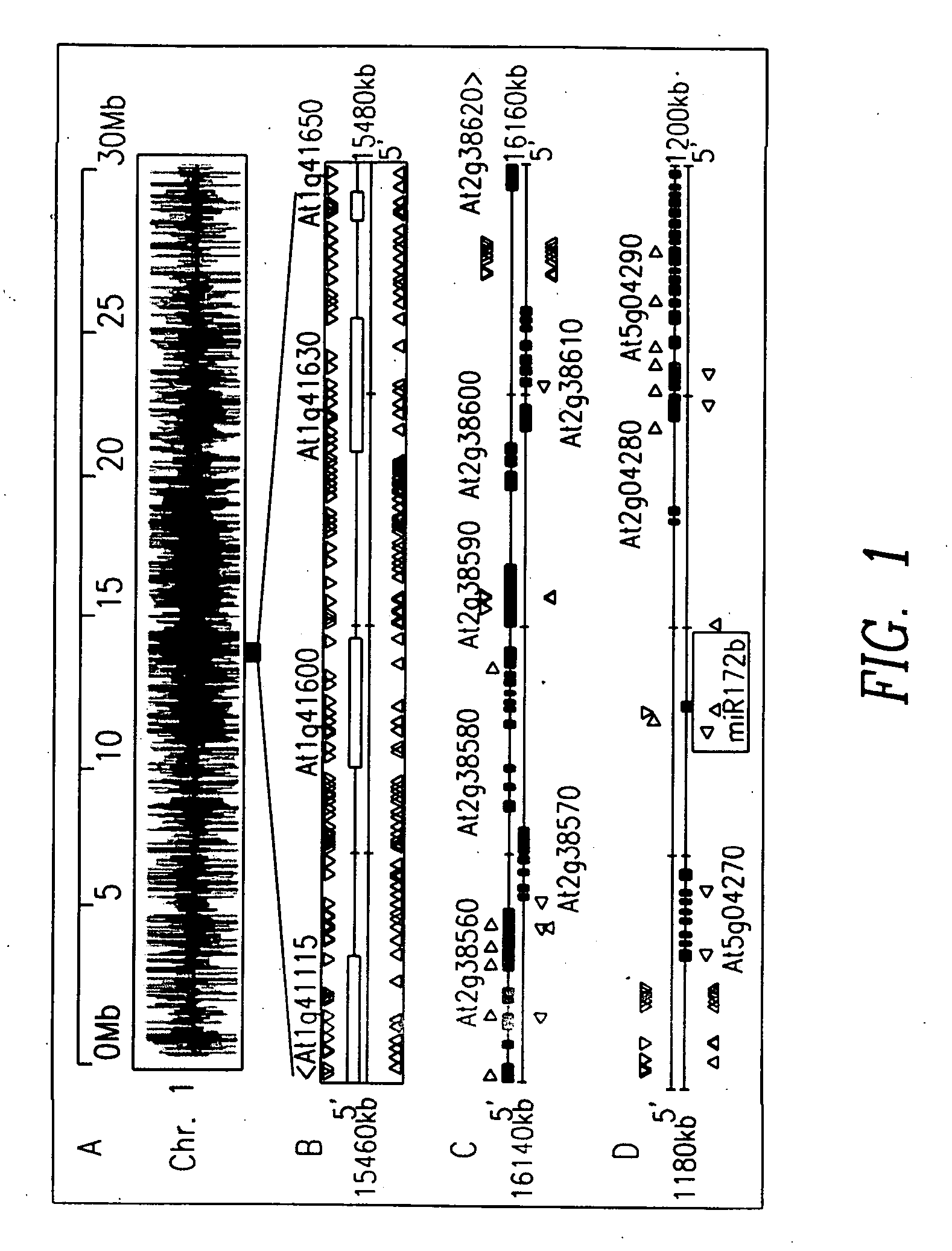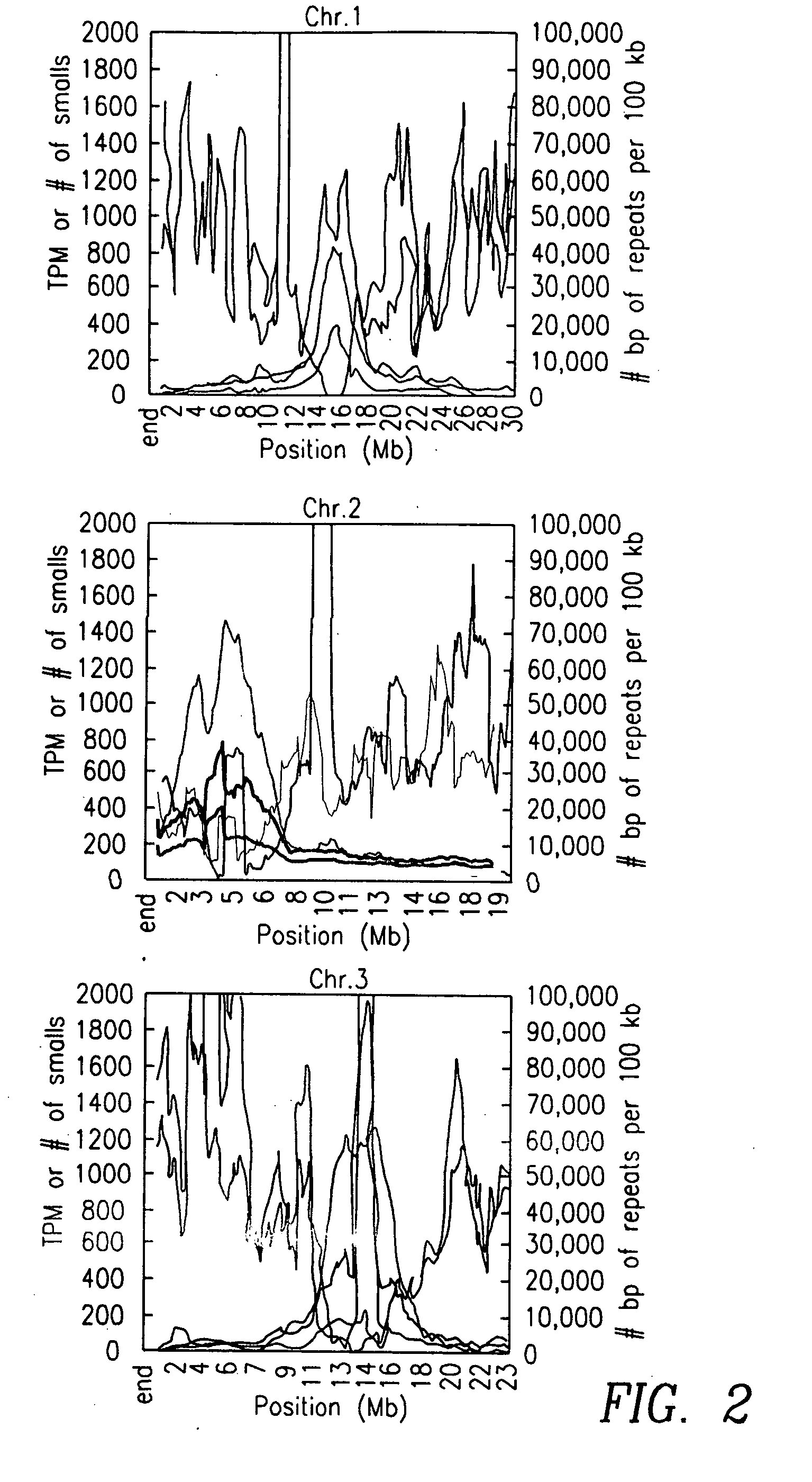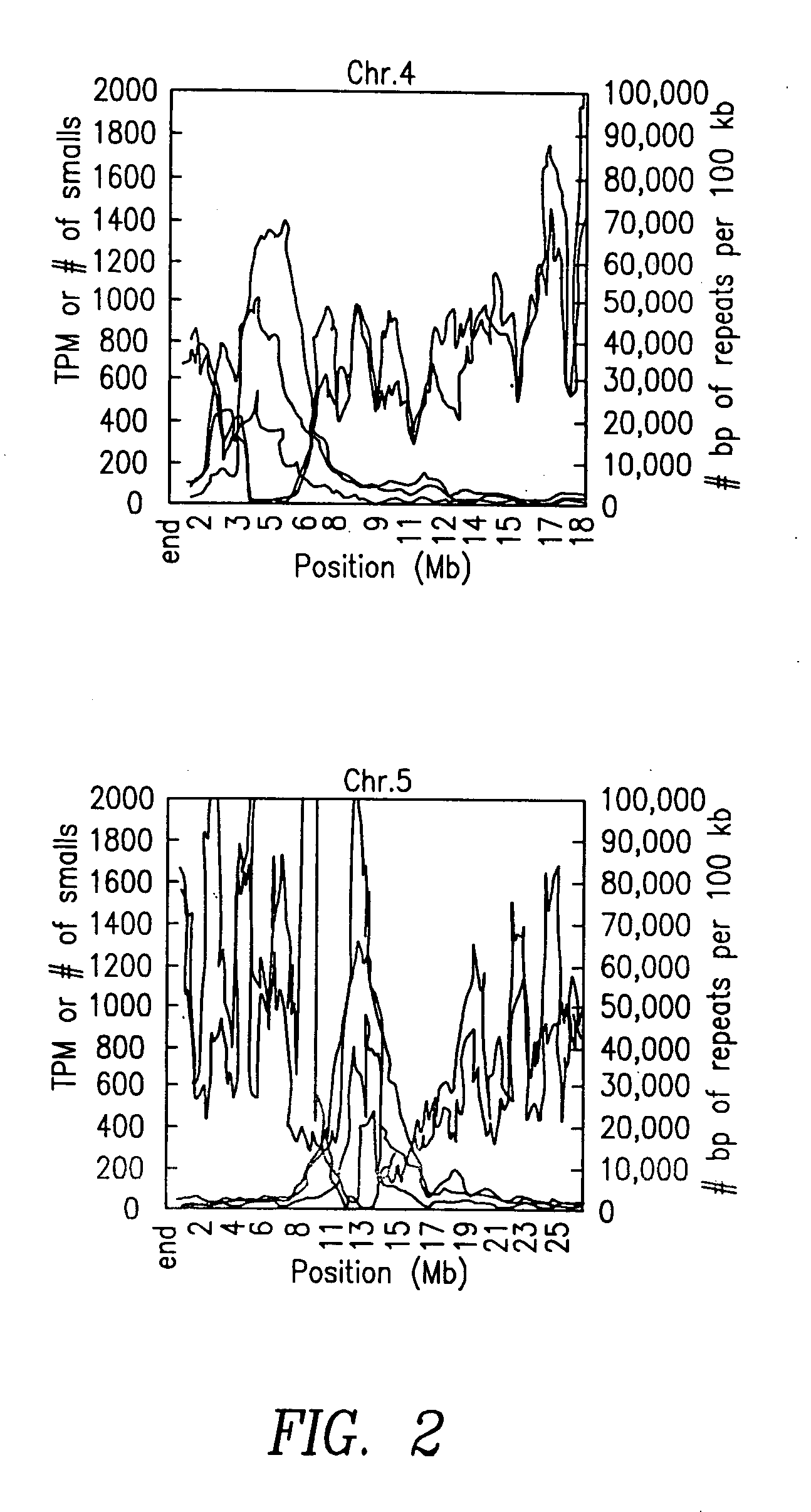Small regulatory RNAs and methods of use
a technology of ribonucleic acid and small rnas, which is applied in the field of small rnas and methods of use, can solve the problems of not all small rnas fit precisely into these two categories, not all small rnas demonstrate perfect base pair complementarity with their target, and methods are not deep enough to sample the full complexity of small rnas in plant and animal systems
- Summary
- Abstract
- Description
- Claims
- Application Information
AI Technical Summary
Benefits of technology
Problems solved by technology
Method used
Image
Examples
example 1
[0097] Adaptation of MPSS for small RNA analysis. To investigate the full complexity of small RNAs, we modified and customized the MPSS vectors and procedures to adapt the MPSS methodology for the sequencing of these molecules. We sought to take advantage of the power of MPSS to sequence hundreds of thousands of molecules per sequencing run. Prior applications of MPSS made use of the poly(A) tail of mRNAs to facilitate cDNA synthesis and sequenced only molecules with a 5′ terminal sequence of ‘GATC’ or ‘CATG’, generated by a restriction enzyme like DpnII or NlaIII. Because most small RNAs are unlikely to begin with these restriction sites or contain a poly(A), the MPSS cloning vectors were adapted to initiate sequencing from the first nucleotide, regardless of the sequence. An overview of the method is shown in Supplementary FIG. 1. Briefly, small RNA molecules are isolated by size fractionation on a polyacrylamide gel, RNA adapters are sequentially ligated to the 5′ and 3′ ends, an...
example 2
[0112] Sequencing of Arabidopsis rdr2 mutants by MPSS and 454. Previous reports have indicated that rdr2 mutants show a dramatic reduction in endogenous siRNAs and a corresponding increase in miRNAs, Xie, Z., et al. 2004, Genetic and Functional Diversification of Small RNA Pathways in Plants. PLoS Biol 2: E104. It was reasoned that deep sequencing in this mutant would reveal the full complement of miRNAs in Arabidopsis. Two methods were utilized for the high-throughout sequencing of small RNAs, Meyers, B., et al., 2006, Sweating the Small Stuff: microRNA Discovery in Plants. Curr Opin Biotechnol 17: 139-146, including Massively Parallel Signature Sequencing Lu, C., et al., 2005, Elucidation of the Small RNA Component of the Transcriptome. Science 309: 1567-1569, and the 454 technology, Margulies, M. et al., 2005, Genome Sequencing in Microfabricated High-Density Picolitre Reactors. Nature 437: 376-380.
[0113] MPSS provides extraordinary depth, sequencing a half million or more molec...
example 3
[0120] Experimental Validation of Novel miRNAs.
[0121] As a first step towards the identification of novel miRNAs, rdr2 MPSS sequences were compared with previously-identified wildtype small RNAs in a five-way Venn diagram (FIG. 7). Among those small RNAs that are present in both libraries, the sequences were chosen for further analysis from boxes 3-6 and 9-12; these sequences matched genomic regions that can form hairpin structures and they passed the sparse cluster filter typical of miRNAs. Eliminating known miRNA genes (101 sequences) and transposons (eight sequences) resulted in a set of 54 small RNA sequences and a total of 31 candidate genomic loci. Because most of the novel candidate miRNAs were sequenced by MPSS multiple times and all were independently detected in two different samples (rdr2 and wildtype), they represent good candidates for novel Arabidopsis miRNAs that are expressed at low levels, may not be conserved between plant species, and have not been described as m...
PUM
| Property | Measurement | Unit |
|---|---|---|
| Fraction | aaaaa | aaaaa |
| Mass | aaaaa | aaaaa |
| Mass | aaaaa | aaaaa |
Abstract
Description
Claims
Application Information
 Login to View More
Login to View More - R&D
- Intellectual Property
- Life Sciences
- Materials
- Tech Scout
- Unparalleled Data Quality
- Higher Quality Content
- 60% Fewer Hallucinations
Browse by: Latest US Patents, China's latest patents, Technical Efficacy Thesaurus, Application Domain, Technology Topic, Popular Technical Reports.
© 2025 PatSnap. All rights reserved.Legal|Privacy policy|Modern Slavery Act Transparency Statement|Sitemap|About US| Contact US: help@patsnap.com



